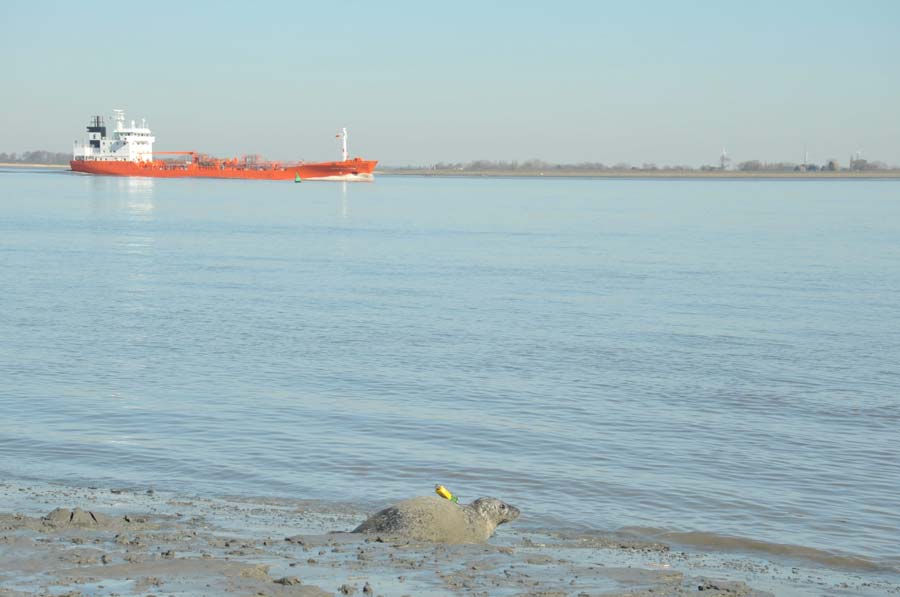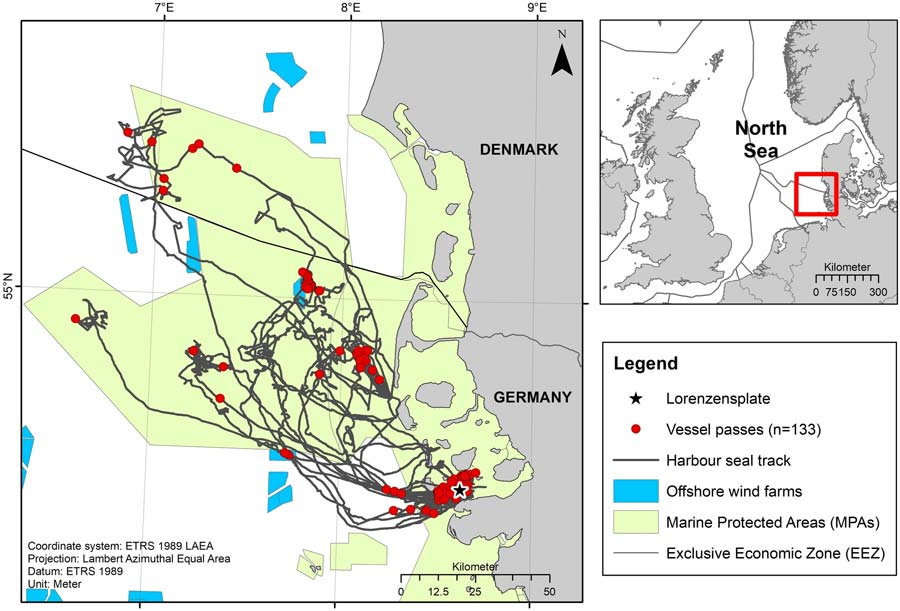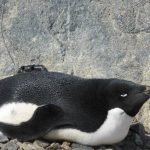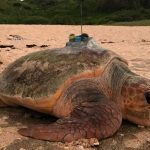← Back
Assessing exposure of harbour seals to maritime traffic noises

Harbour seals living in the North Sea are exposed to a heavy ship traffic. New Argos archival tags enable to record ambient sounds, so that noise exposures can be quantified at the seals’ level. A number of high amplitude noise events were detected, including in Marine Protected areas, and related to identified vessels by a study.
Harbour seals (Phoca vitulina) are abundant top predators in the North Sea. This protected species partitions its time between resting at their coastal haul-out and searching for food at sea. A large population can be found in the Wadden Sea in the southeastern part of the North Sea, stretching from northwest of the Netherlands to Denmark and through the great river estuaries of Germany.
As all pinnipeds they have sensitive hearing capabilities, both in-air and underwater. In the North Sea in particular, intense ship traffic and increasing human activities at sea can expose them to repeated noise. Several studies have been made using distance of an animal from Automatic Identification System (AIS)-located vessels as a proxy for the received noise levels from ships (see also on marine mammals and noise: Beluga whales avoid ship noises).
However, not all ships (in particular not small ones, including high-speed boats) have an active AIS beacon, thus leading to a probable underestimation of the number of vessel noise exposures.
Measuring the acoustic environment as received by harbour seals
Technological advances in tag design have made it possible to record sound continuously for several weeks. Nine harbour seals from the Wadden Sea were equipped with long-term sound and movement tags (DTAGs) over 2 consecutive years at Lorenzensplate, a haul-out site.
These tags also record three-dimensional movements, which can provide information on possible behavioural changes during noise exposures.

7 of the tracked harbour seals made multi-day offshore trips into the North Sea and returned to the Wadden Sea for haul-out, except for two which stayed in the tidal areas of the Wadden Sea.
Most showed a high degree of site fidelity and returned to the Lorenzensplate for haul-out. Nearly 90% of their time was spent in Marine Protected Areas.
Analysis of acoustic recordings from harbour seal tags

On the four-week long sound recordings, events of high amplitude noise were detected (560 events with received noise levels above 97 dB in the 2 kHz decidecade frequency band – the highest was 127 dB), and then classified to identify vessel passes (321 events). From those, the ones with low ambient noise were kept (133 events).
Association with AIS-registered vessel was tried using the shape of the noise exposure and AIS vessel speed and approach distance. Only about one third of the noise exposures were plausibly explained by AIS vessels. Among those, cargo ships were the most frequent (46%), followed by high-speed crafts (14%). Several encounters with fishing vessels, tankers and passenger ships were also detected.
Harbour seals encountered vessels both during their offshore trips and while inshore in the Wadden Sea, and almost always (93%) in Marine Protected Areas – where they mostly stayed. On average, seals were exposed to 4.3 vessel passes per day.
Behavioural responses to these noise from the harbour seals need to be investigated systematically, including cumulative effects. This will be the next step, to assess if management measures to reduce vessel exposures and noise must be taken for conservation of the harbour seals.
Reference & links
- Nachtsheim, D.A., Johnson, M., Schaffeld, T. et al. Vessel noise exposures of harbour seals from the Wadden Sea. Sci Rep 13, 6187 (2023). https://doi.org/10.1038/s41598-023-33283-z
- EU Horizon 2020 project “SATURN – Developing solutions to underwater radiated noise“: https://www.saturnh2020.eu/
- Institute for Terrestrial and Aquatic Wildlife Research, University of Veterinary Medicine Hannover, Foundation: https://www.tiho-hannover.de/en/clinics-institutes/institutes/institute-for-terrestrial-and-aquatic-wildlife-research-itaw


